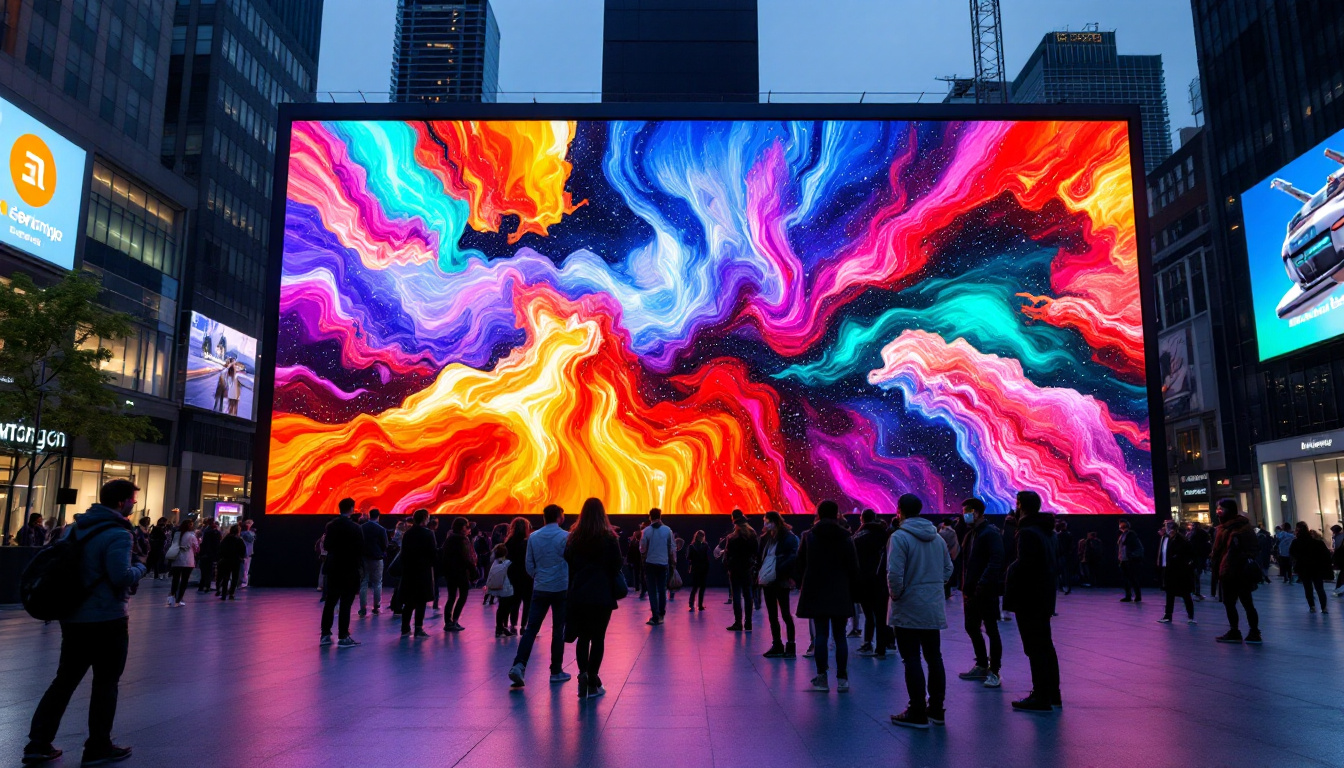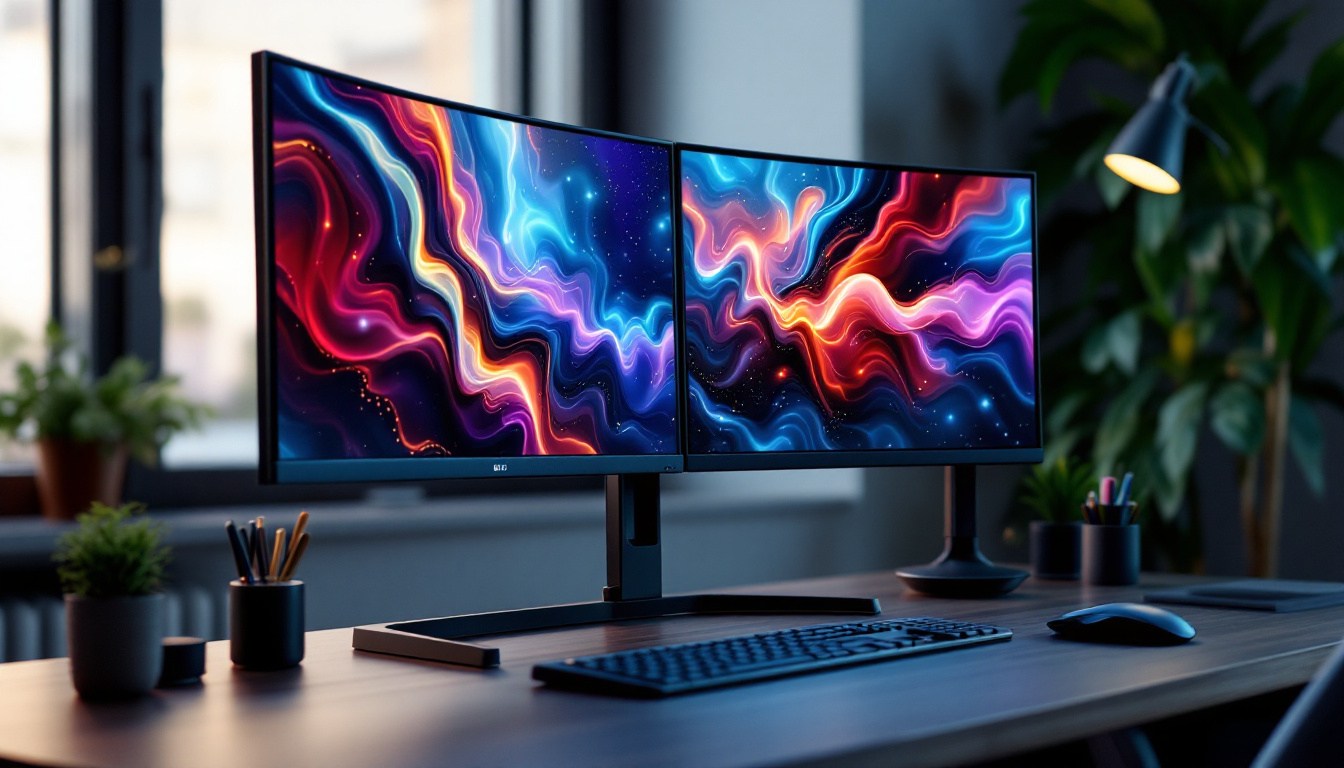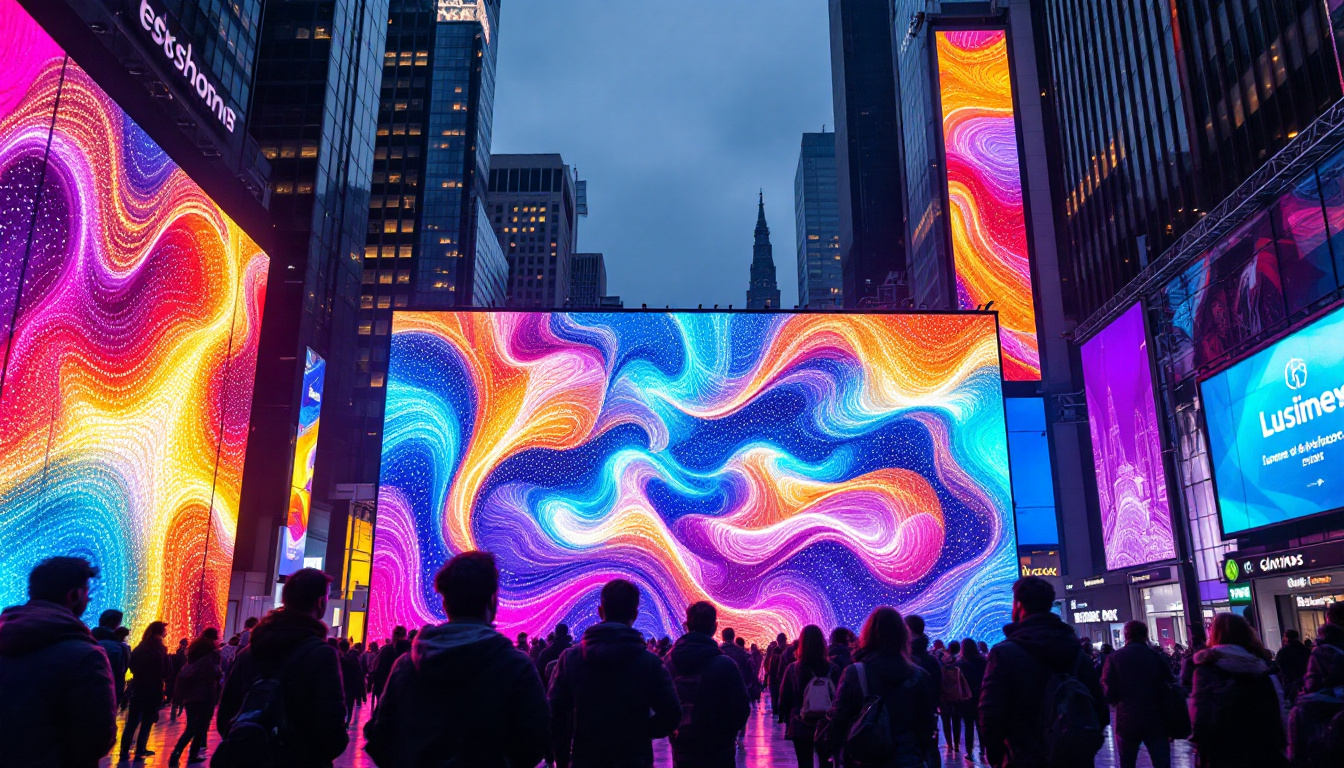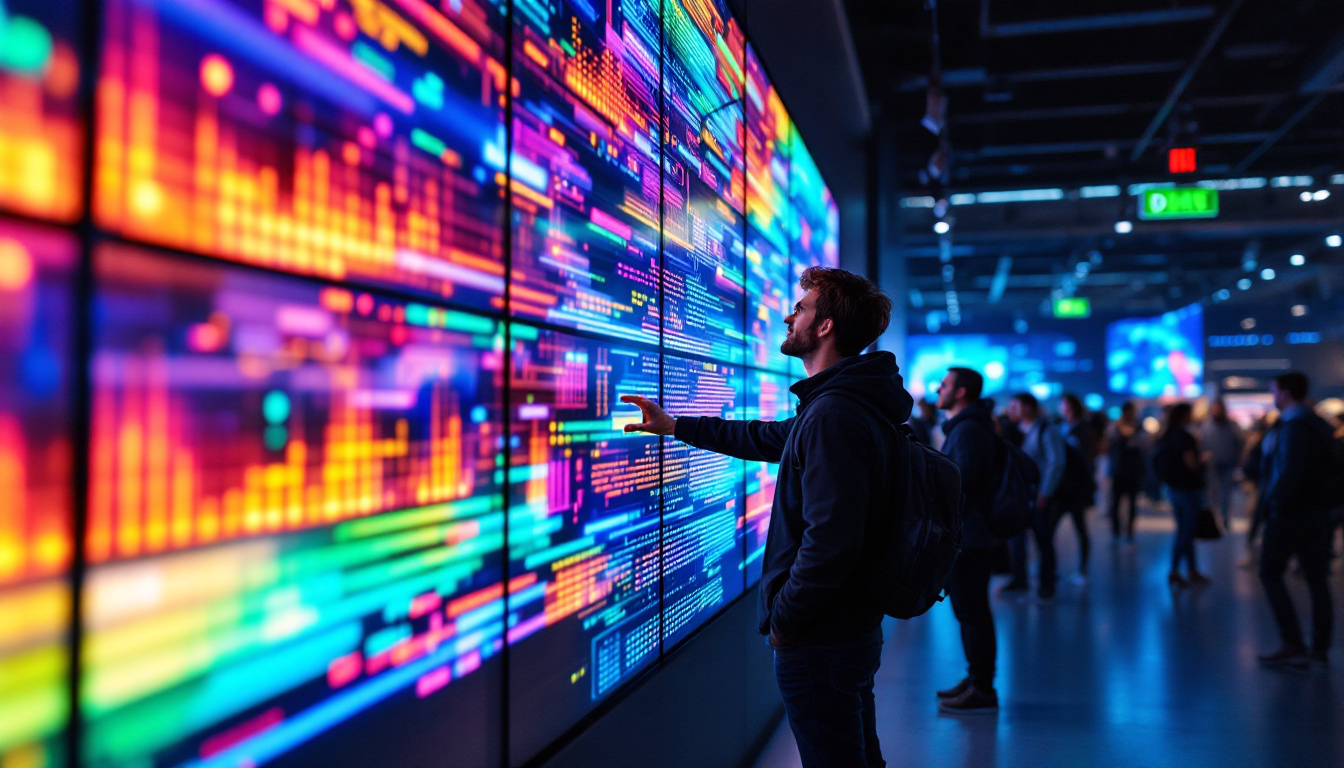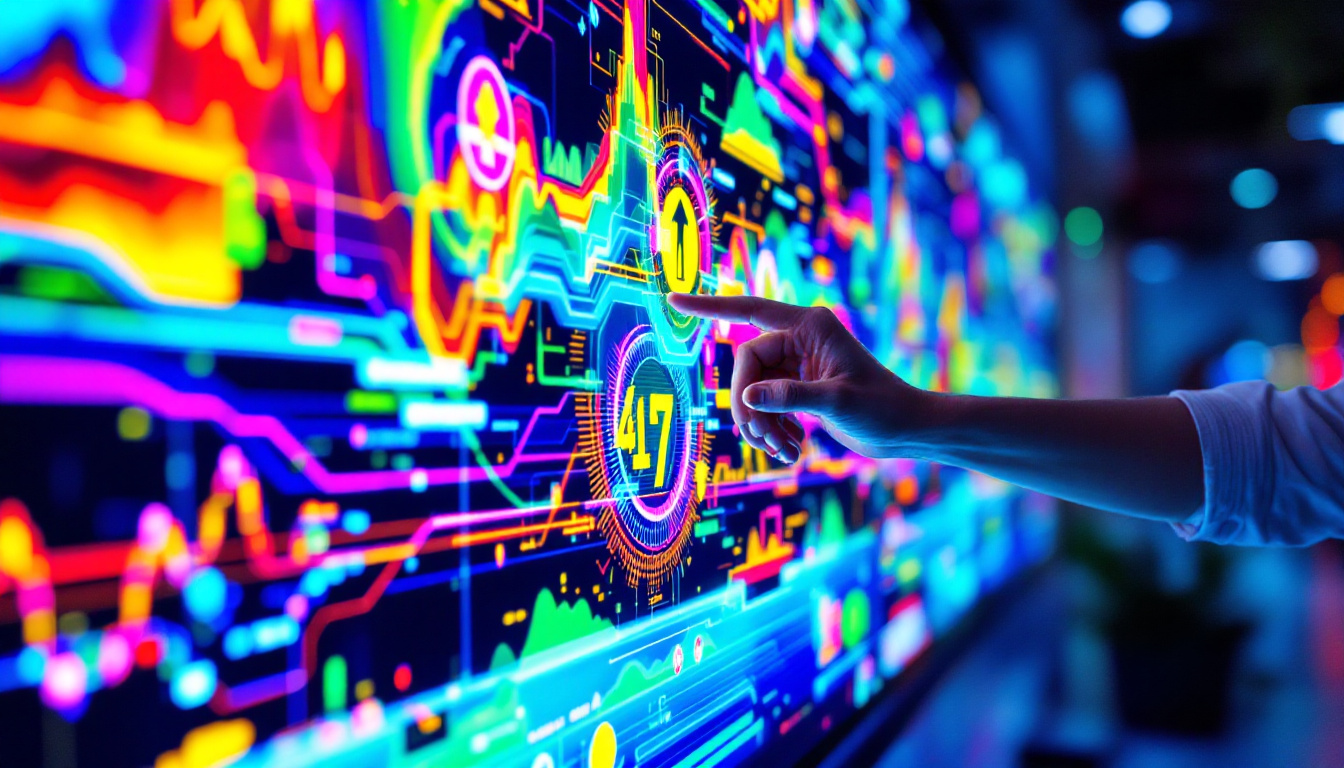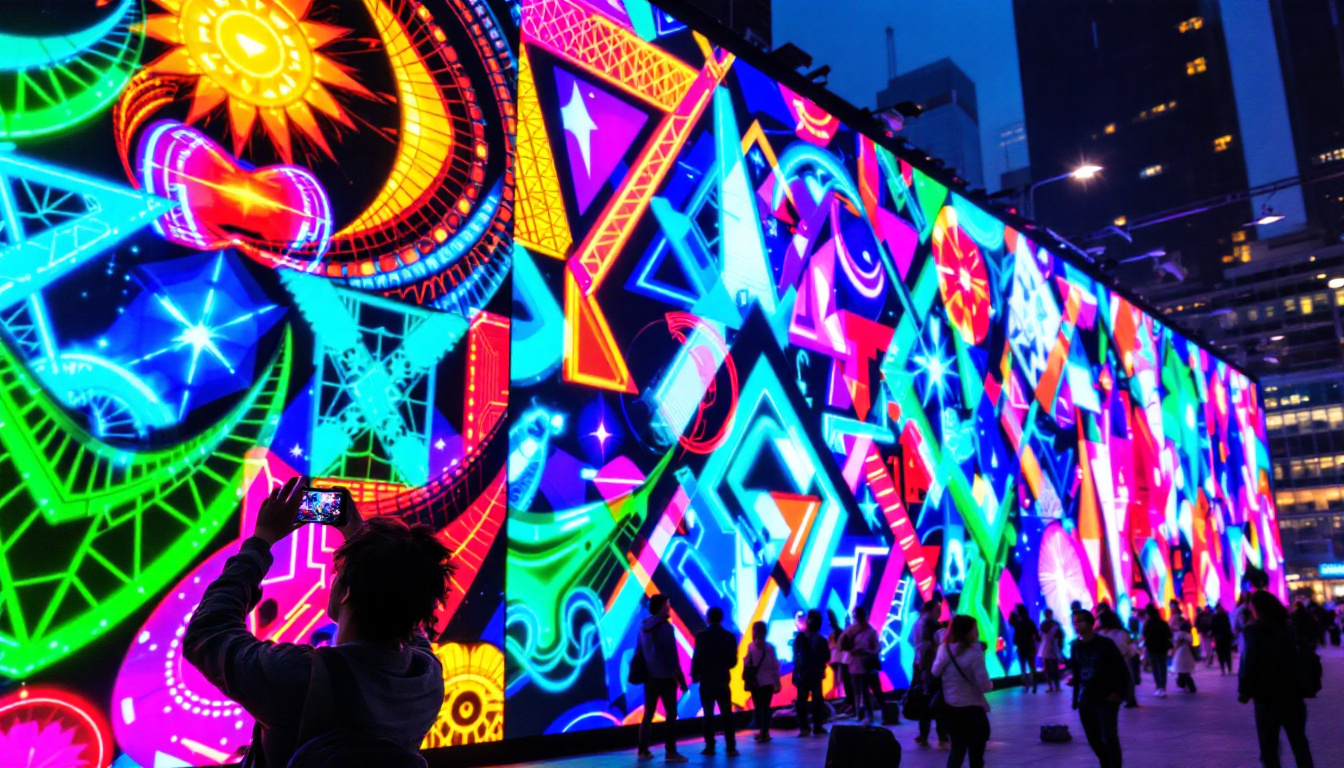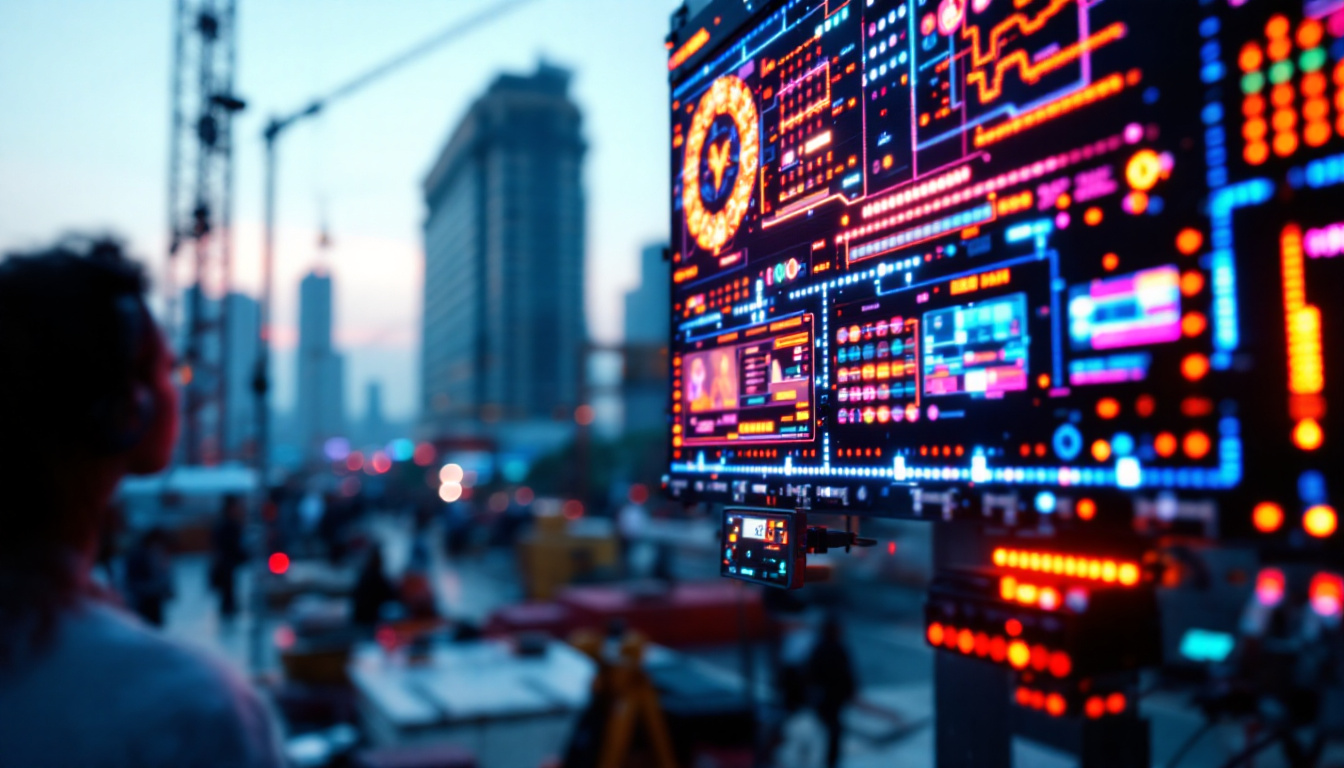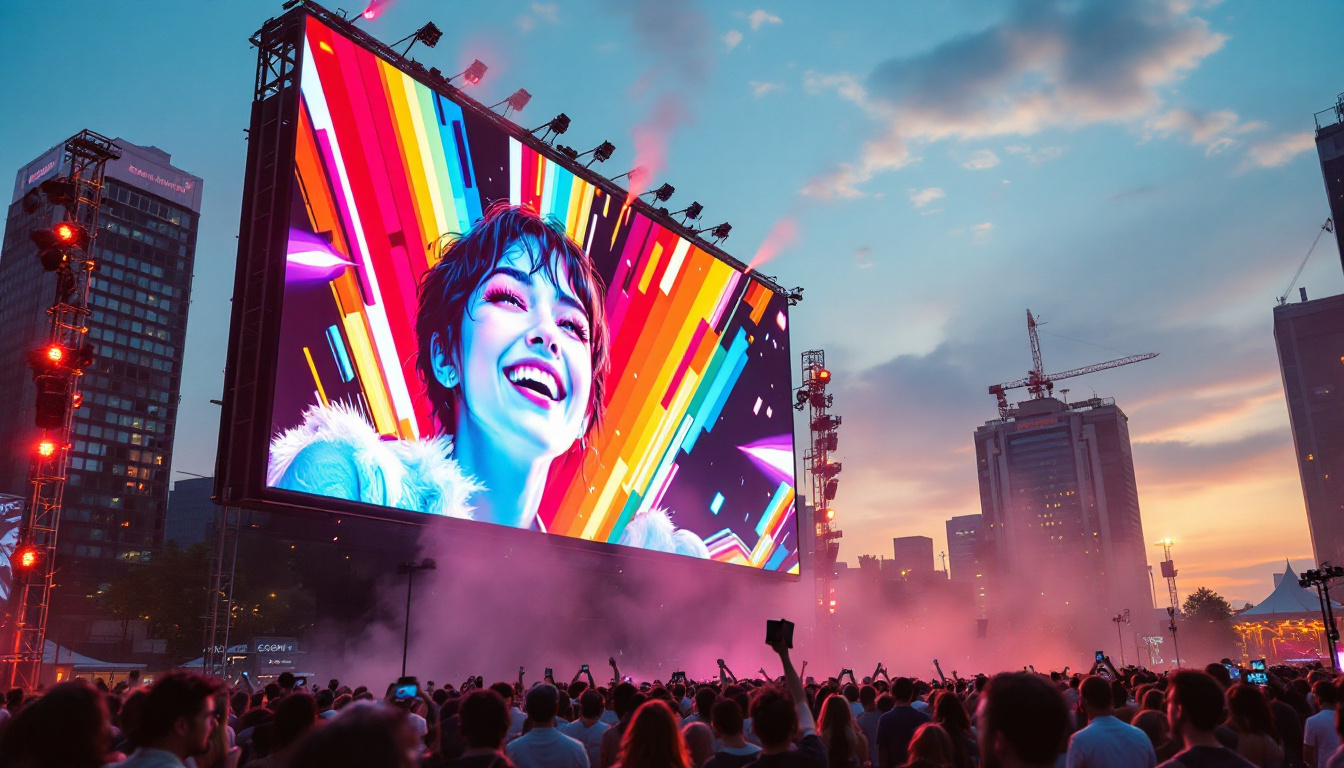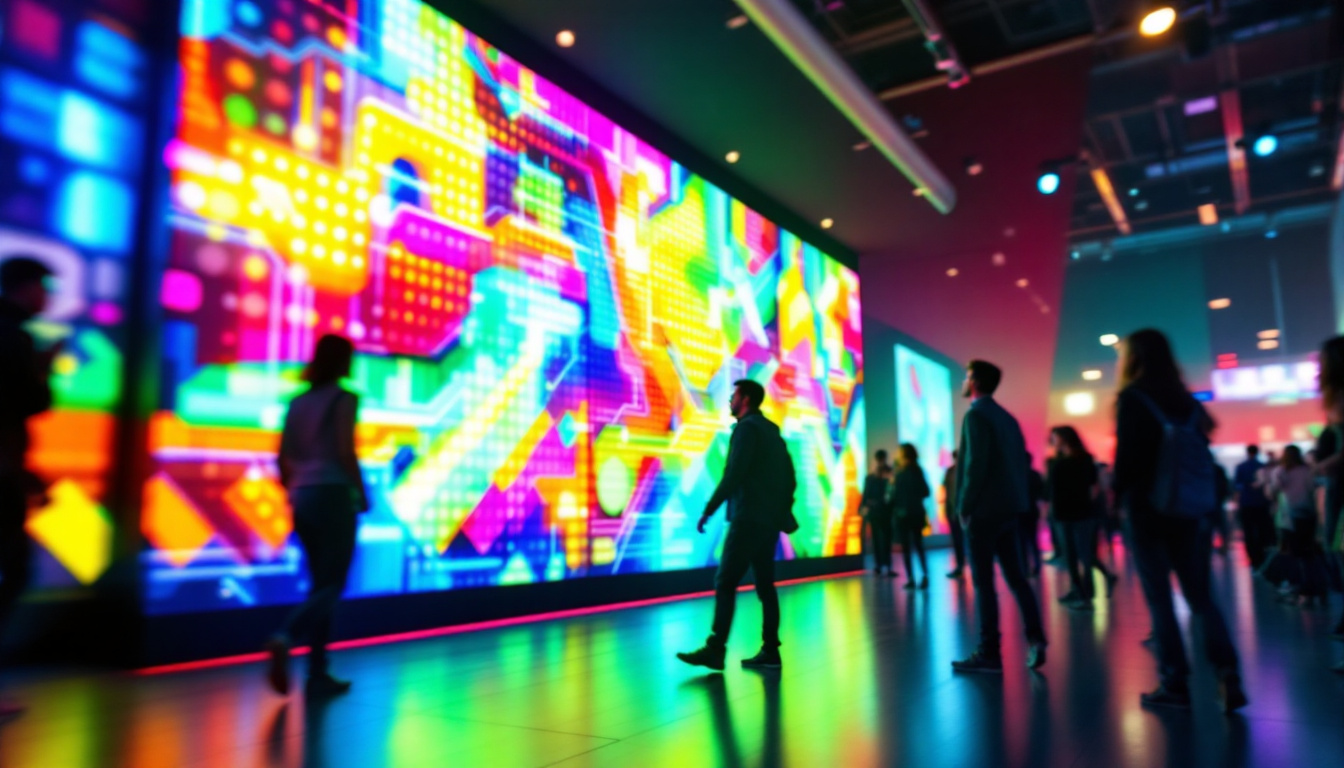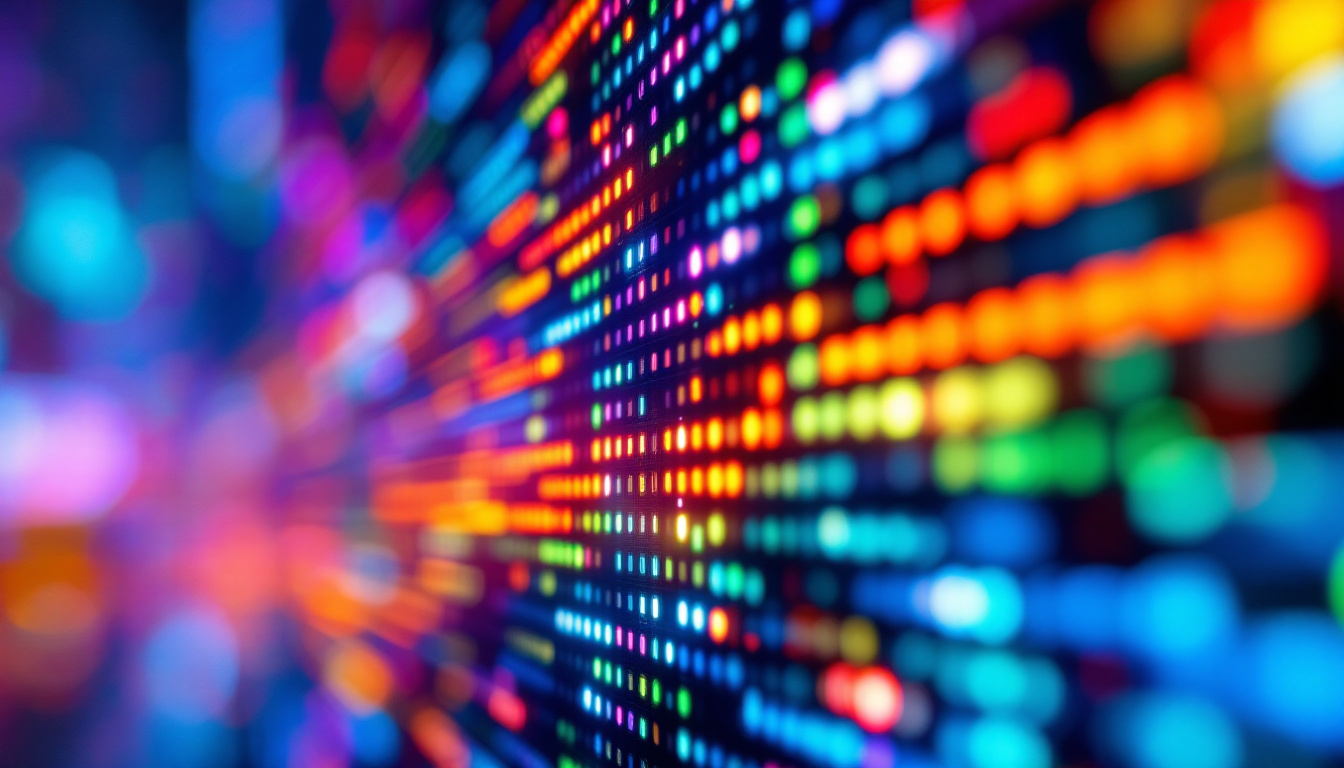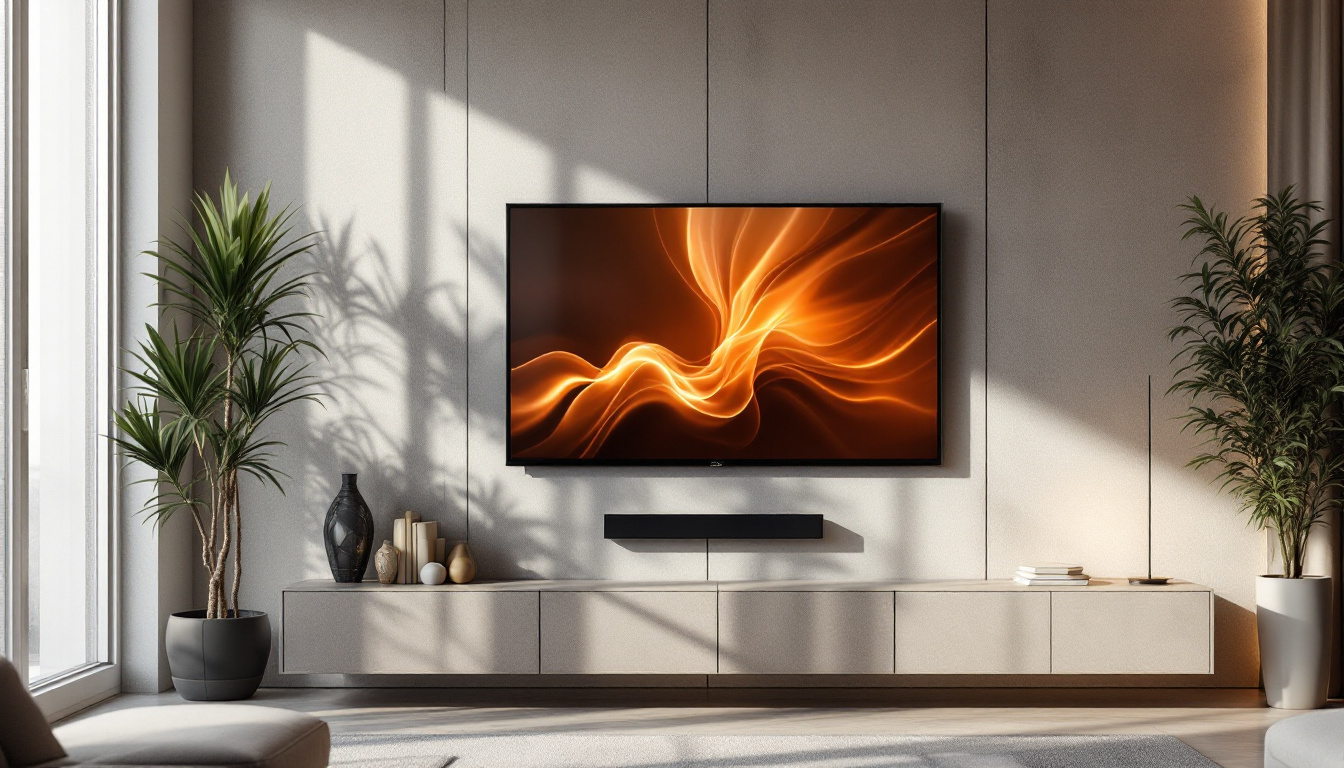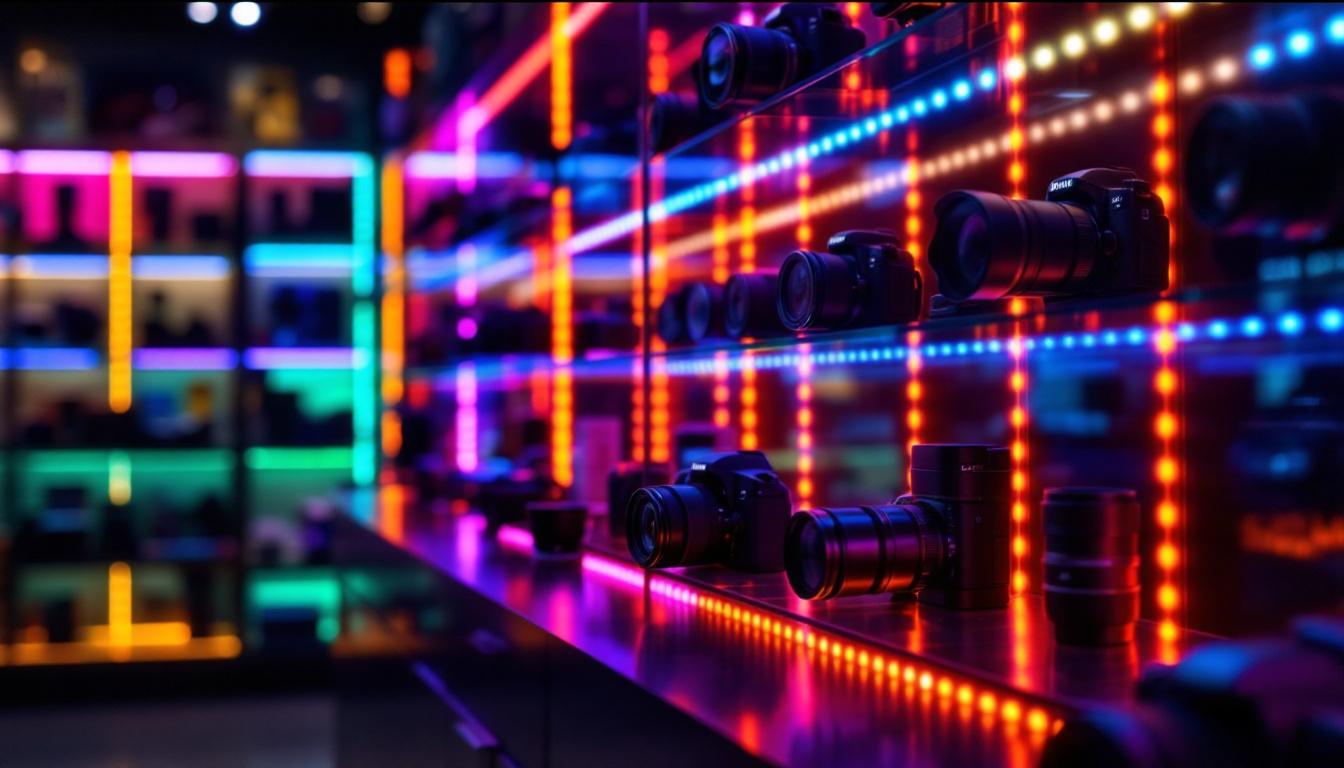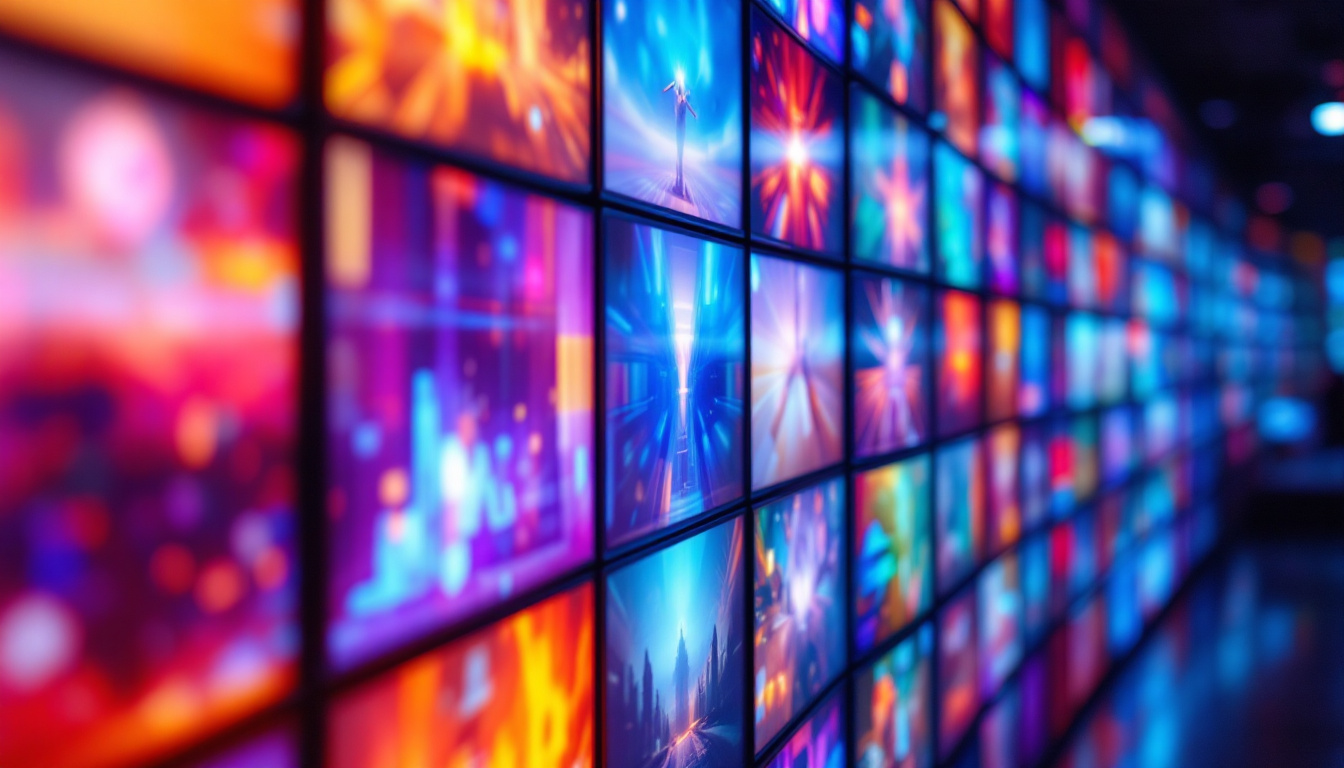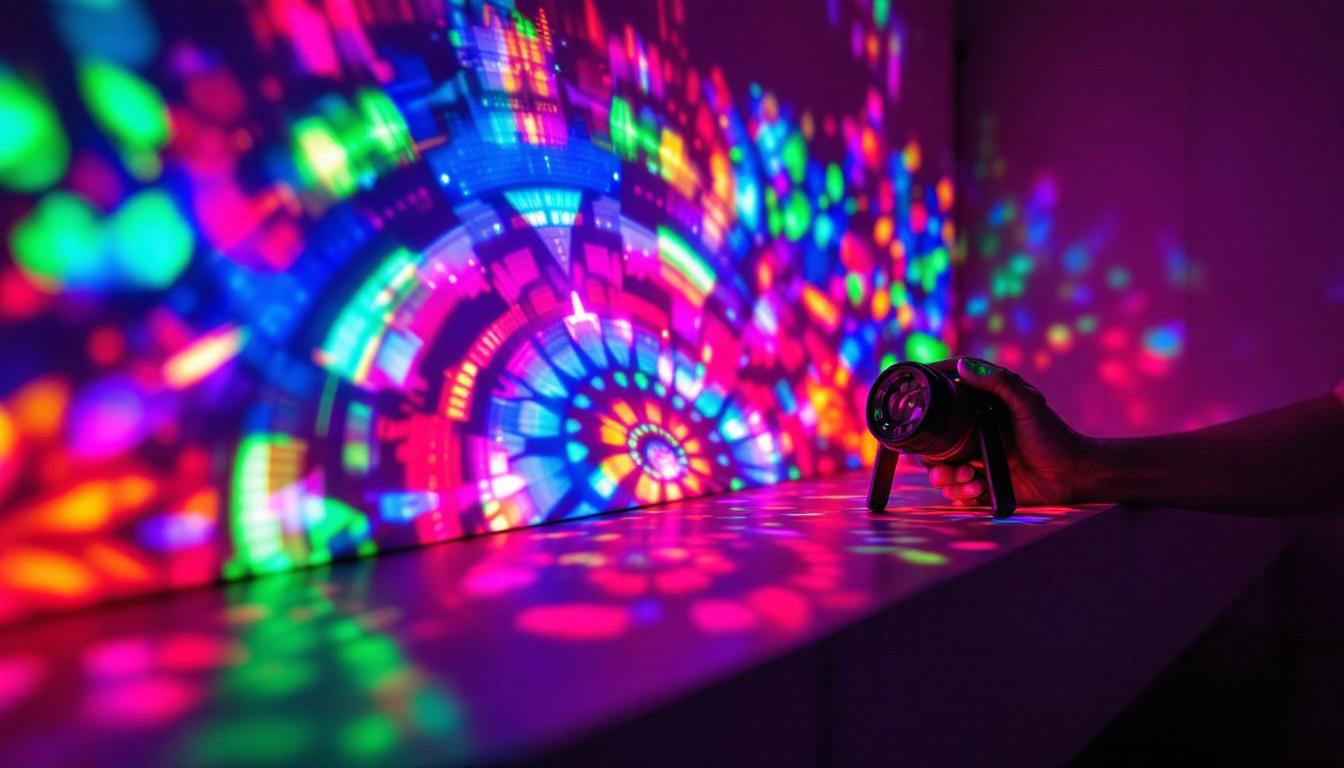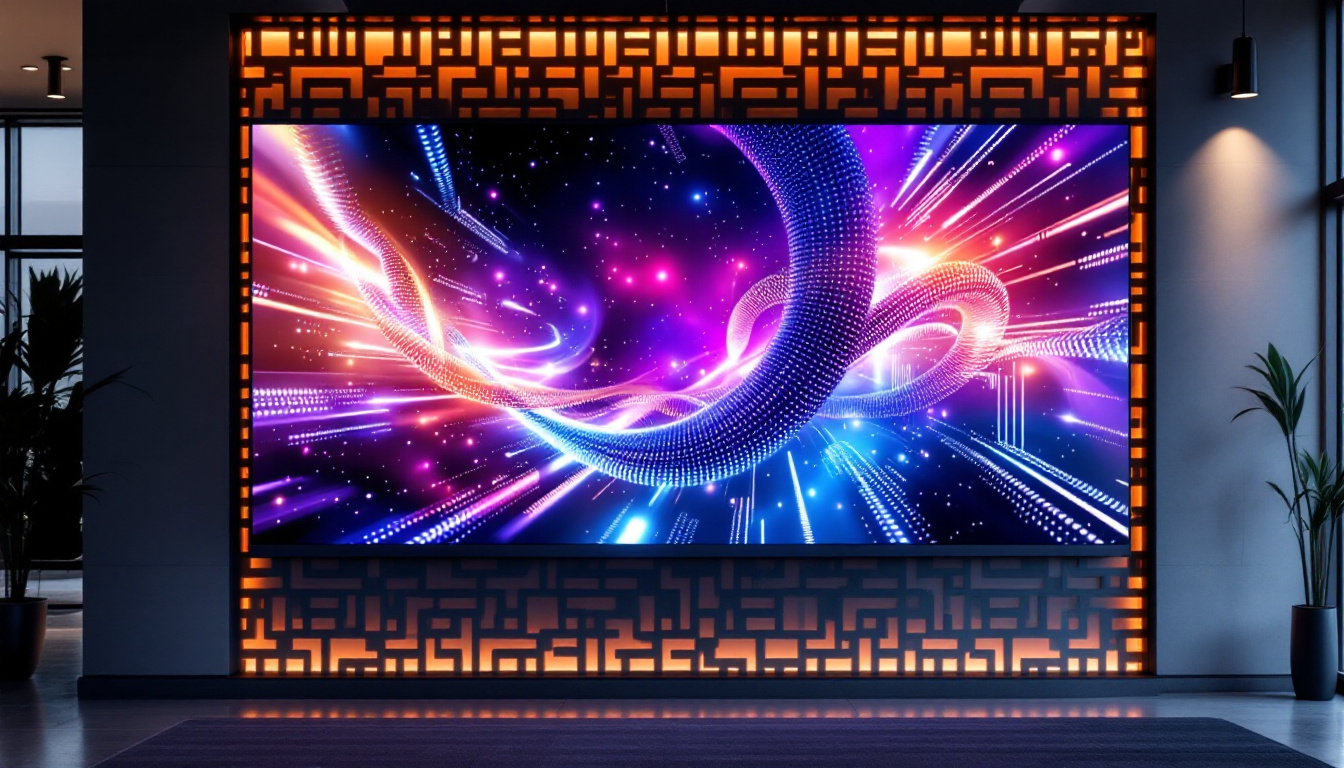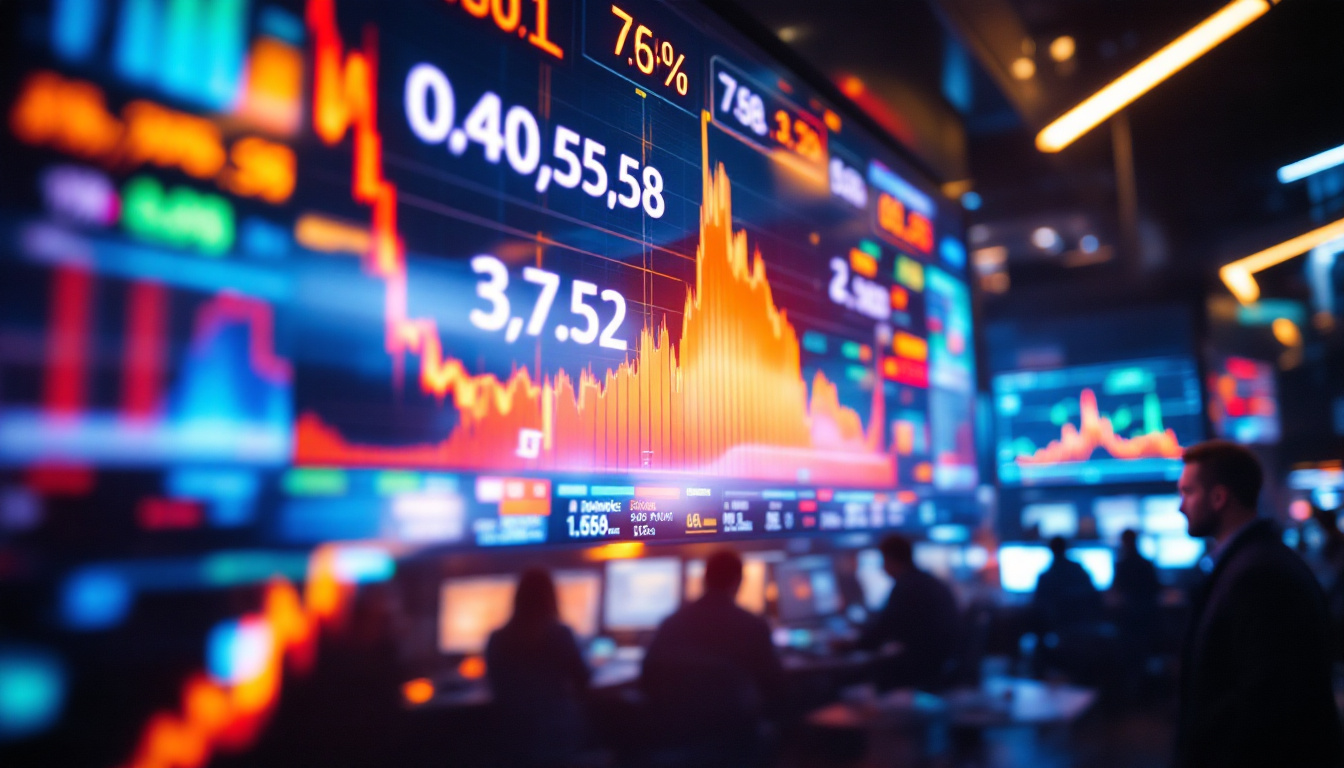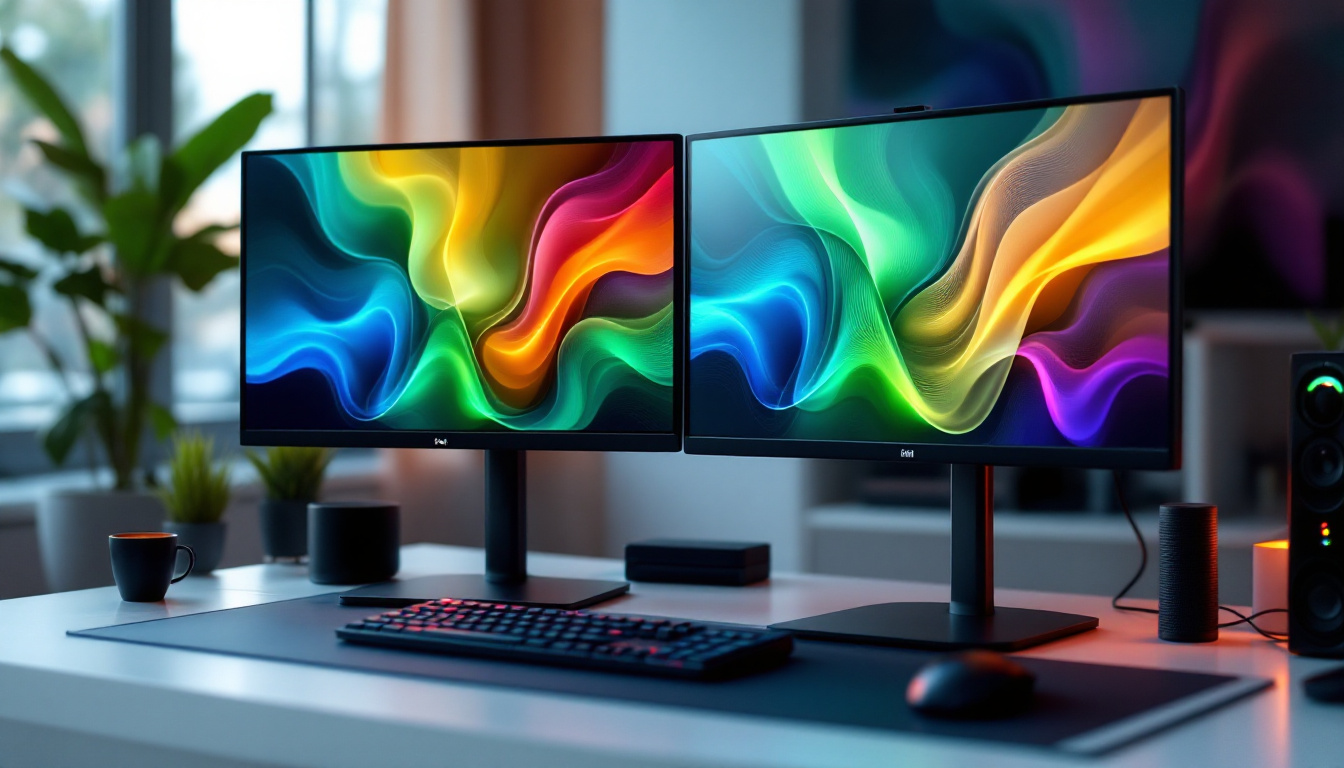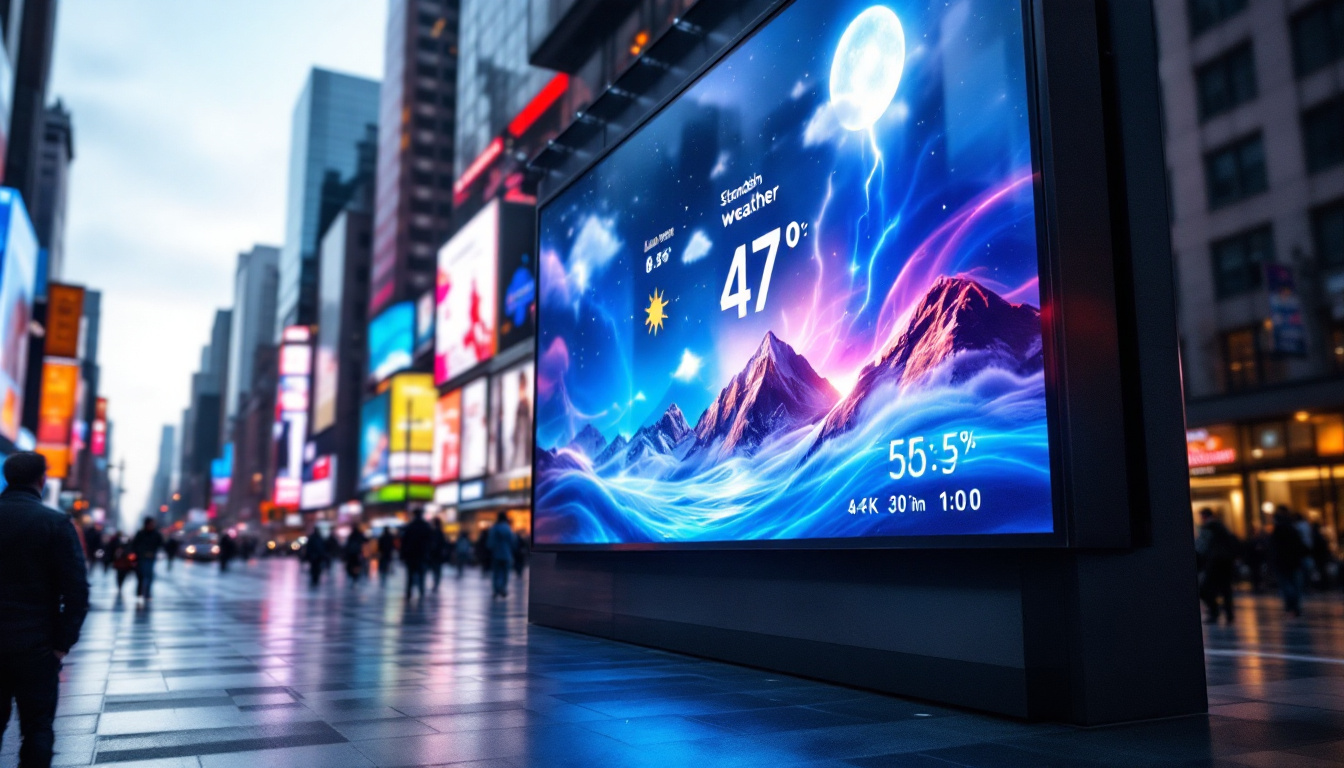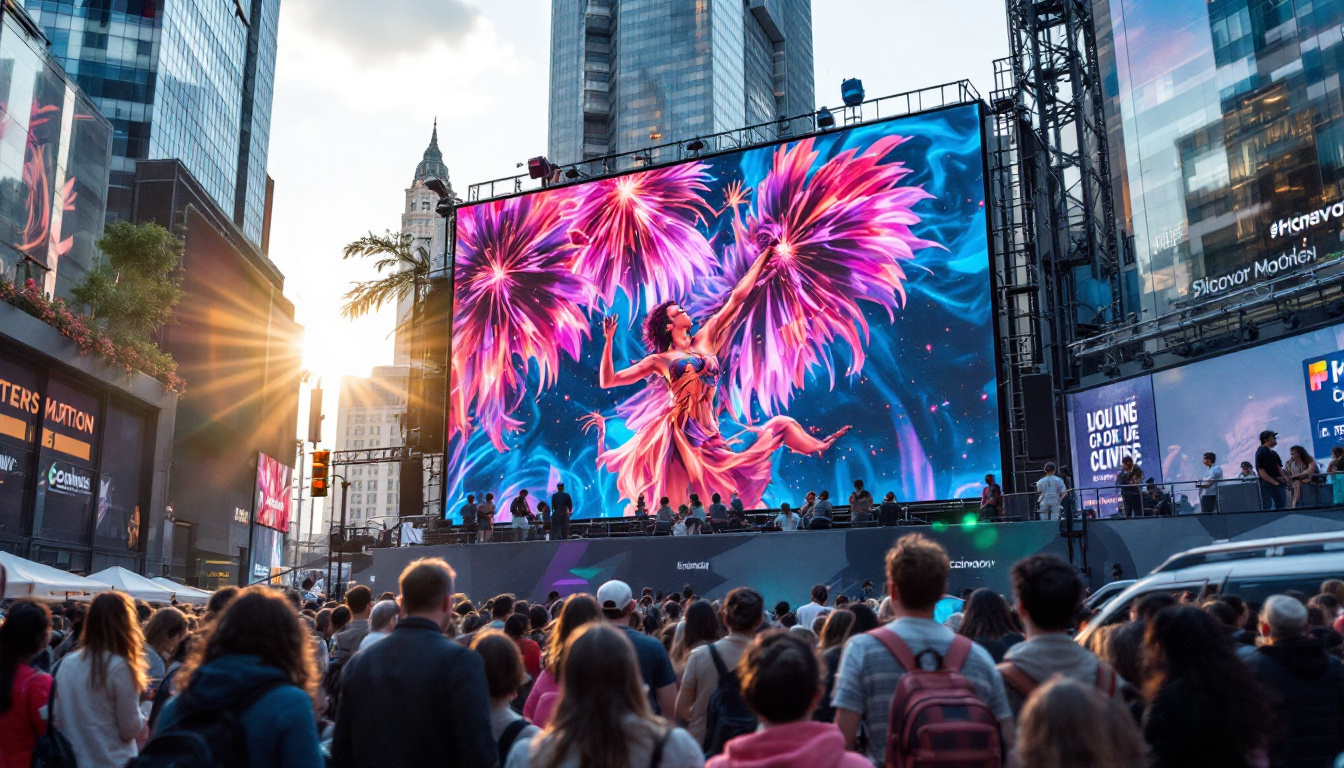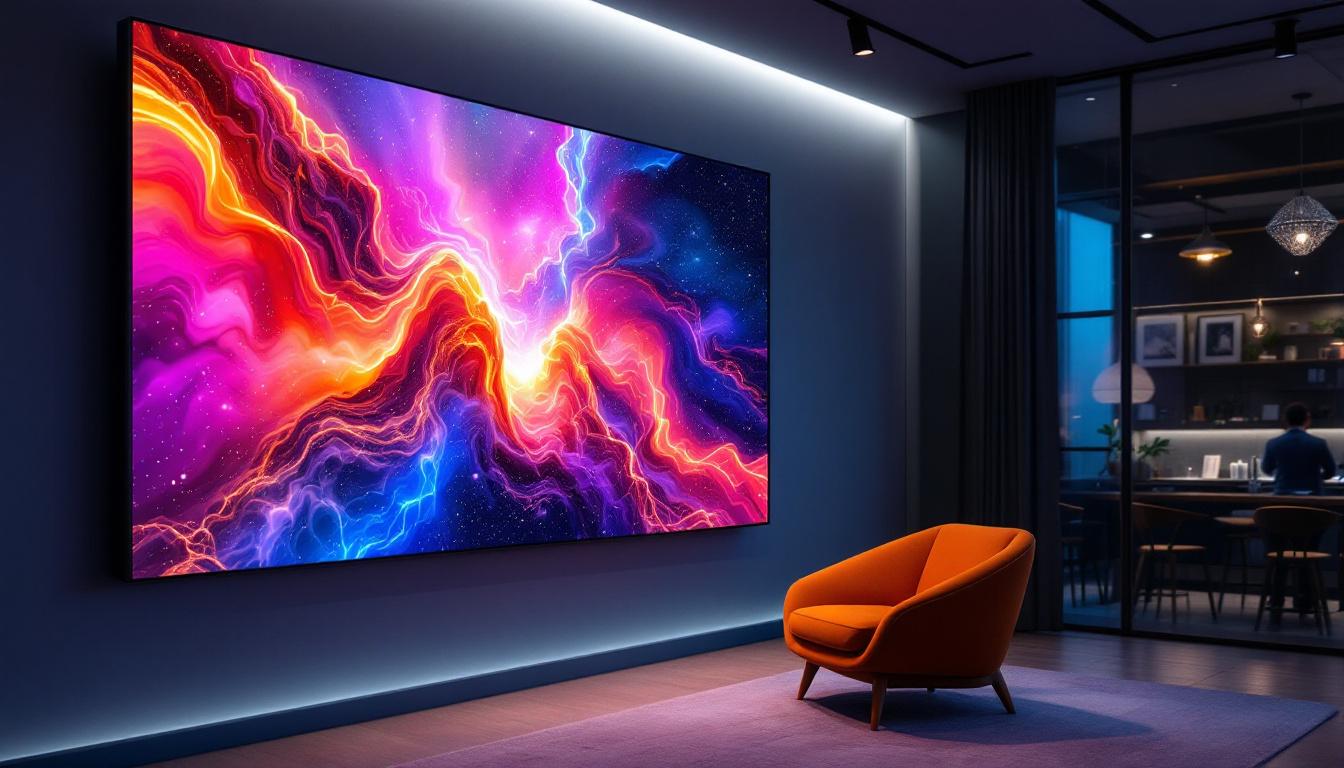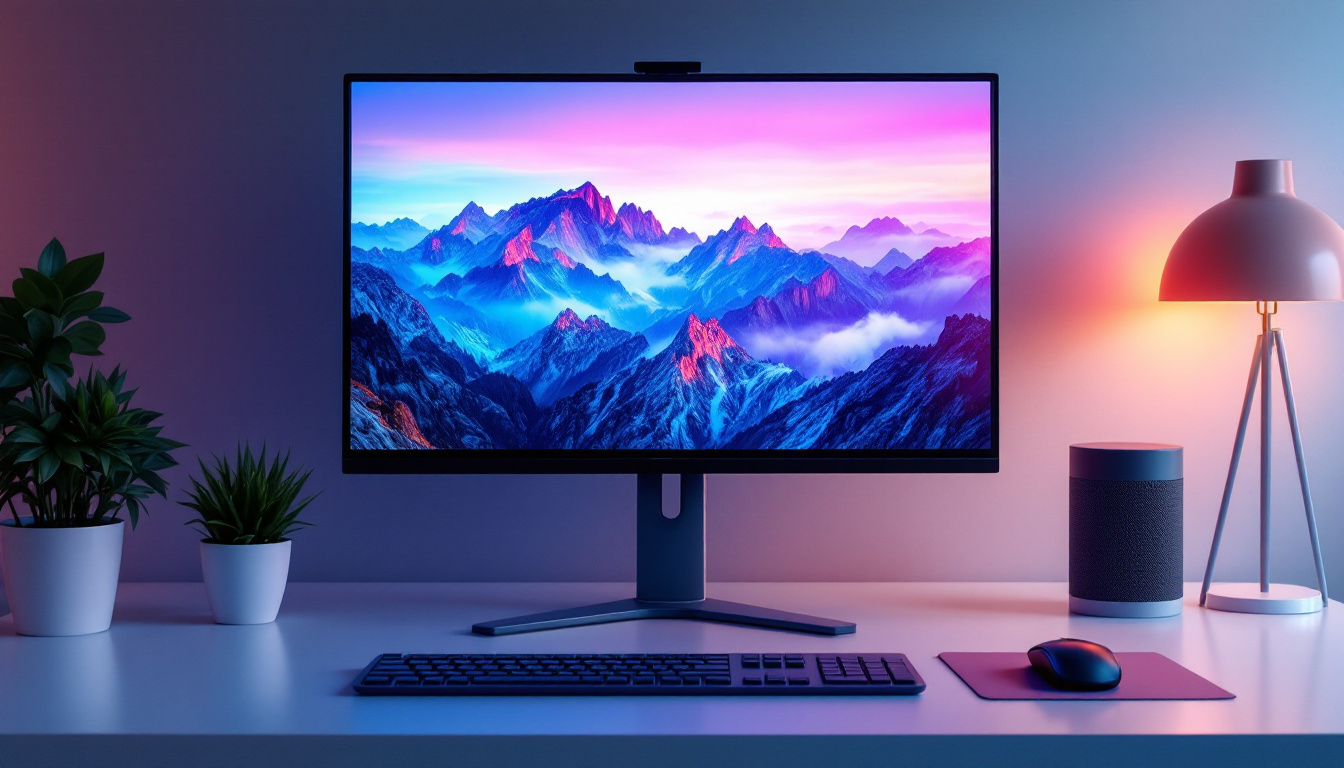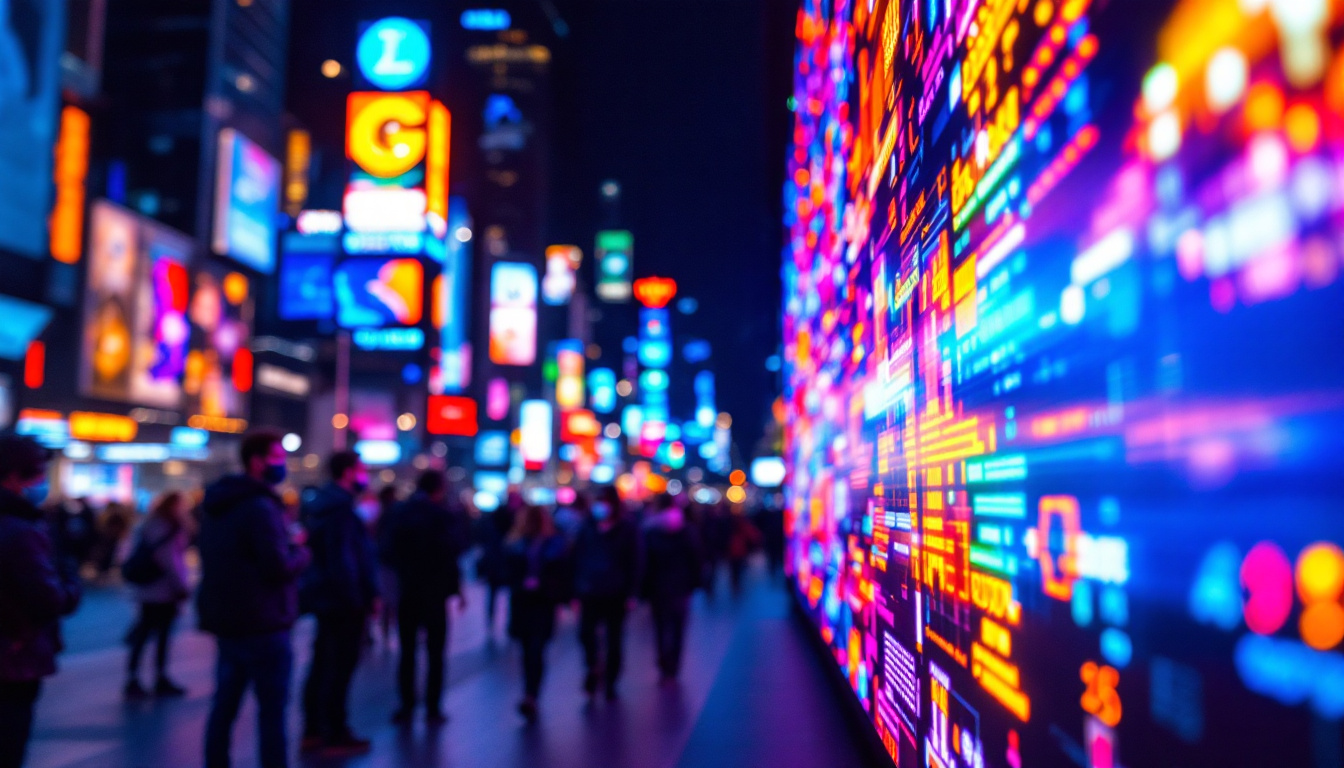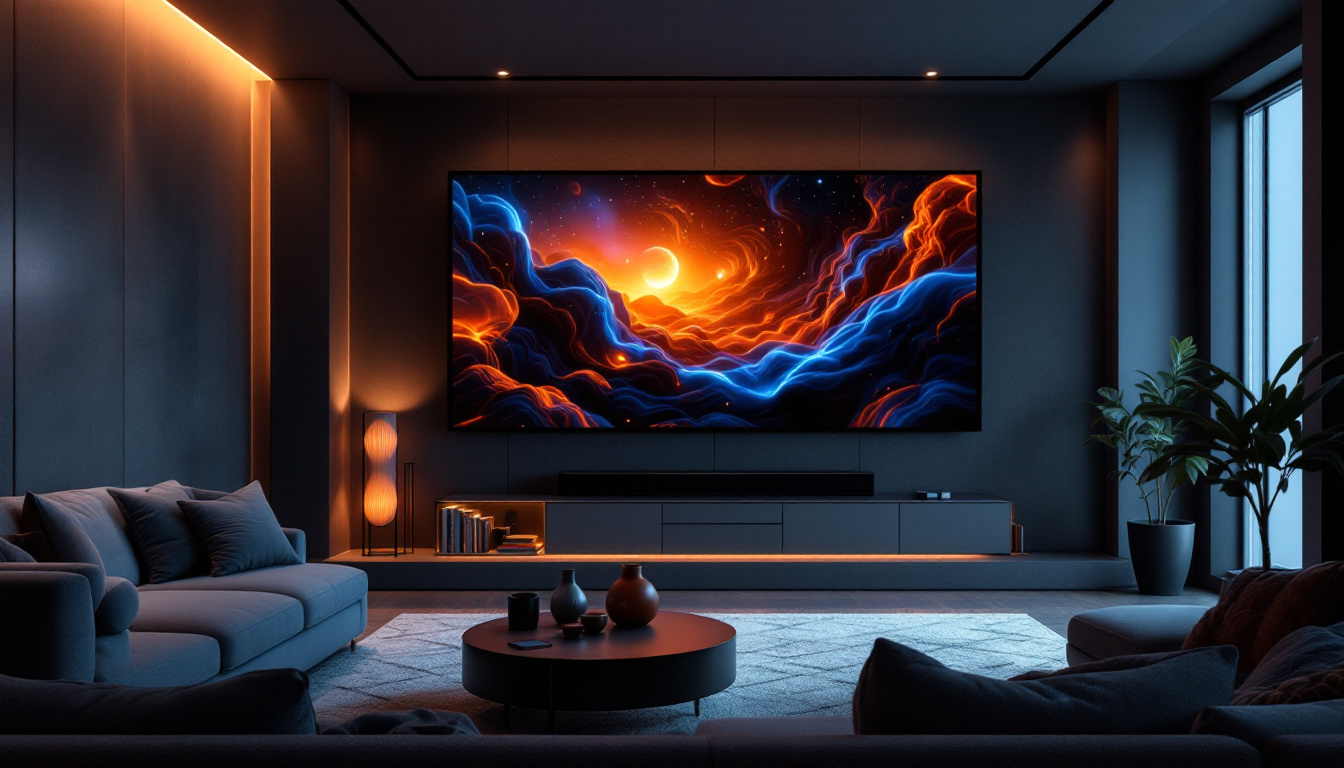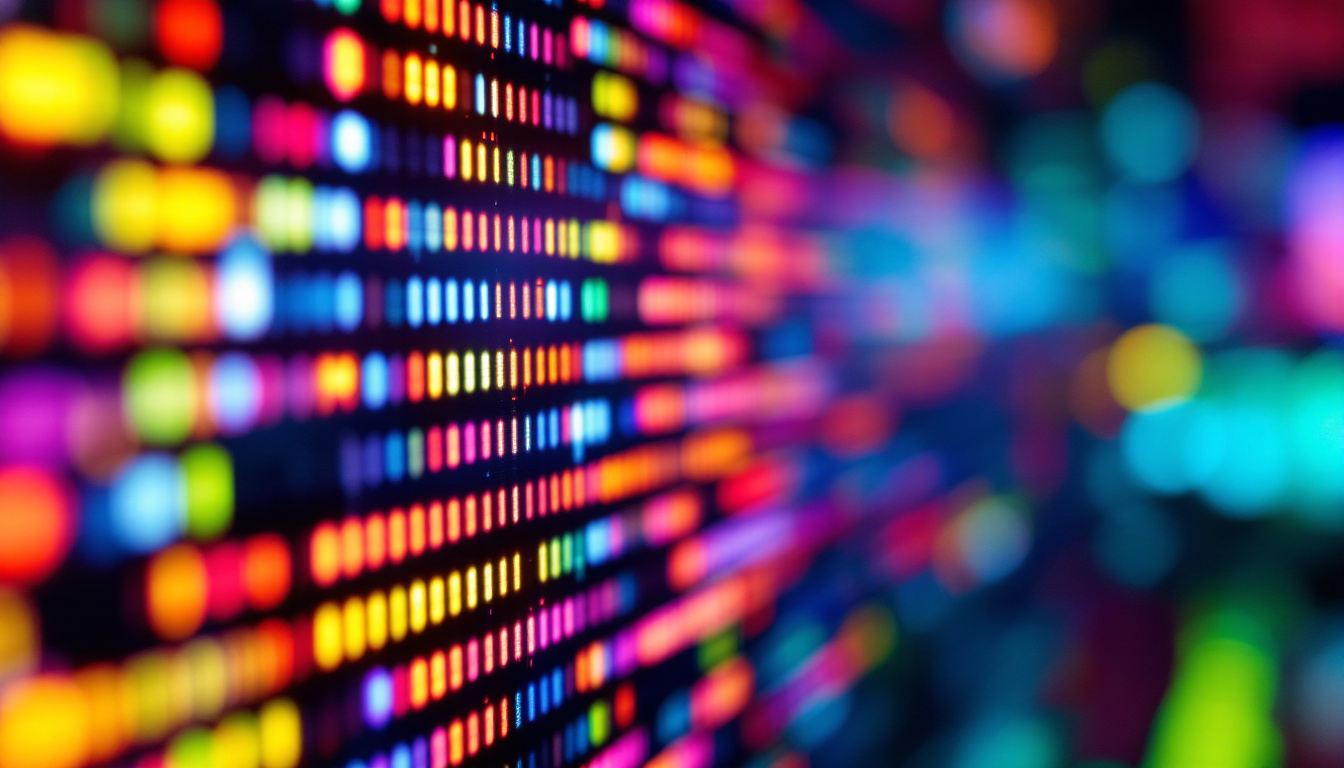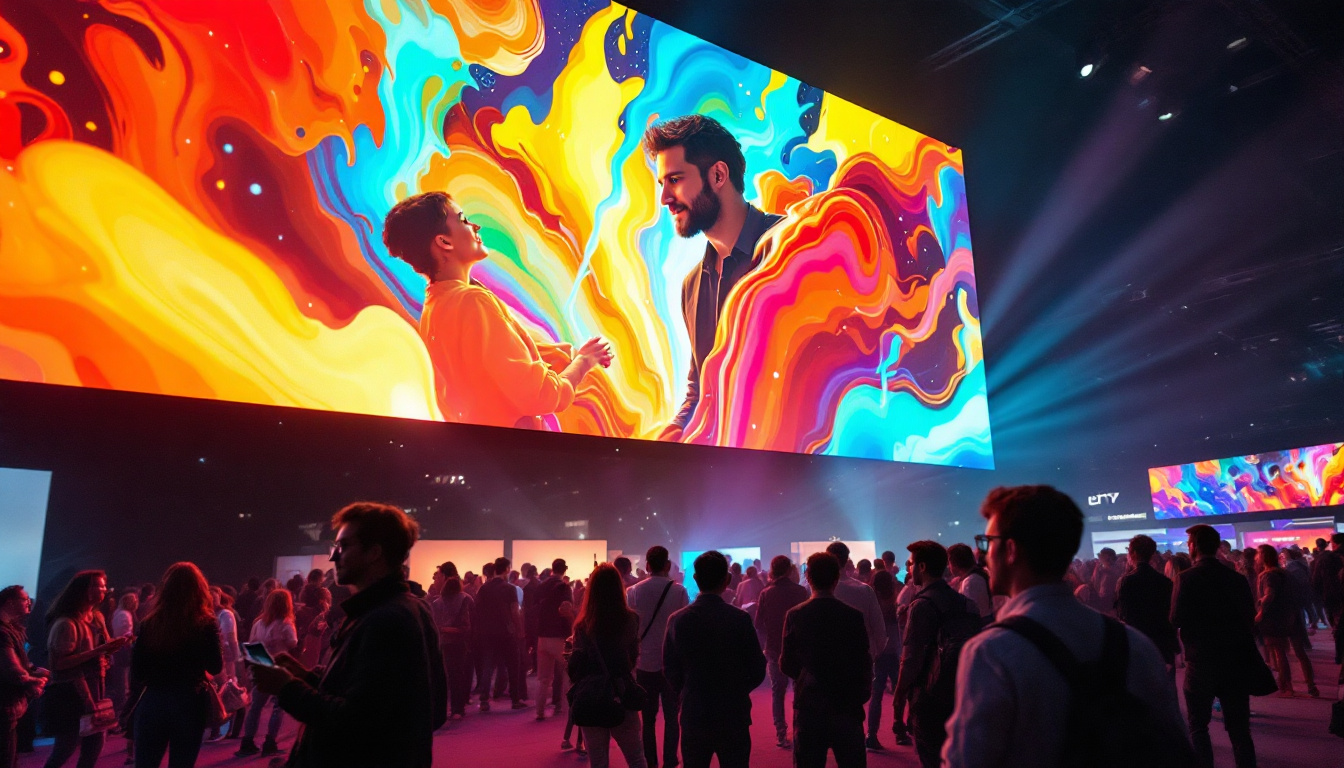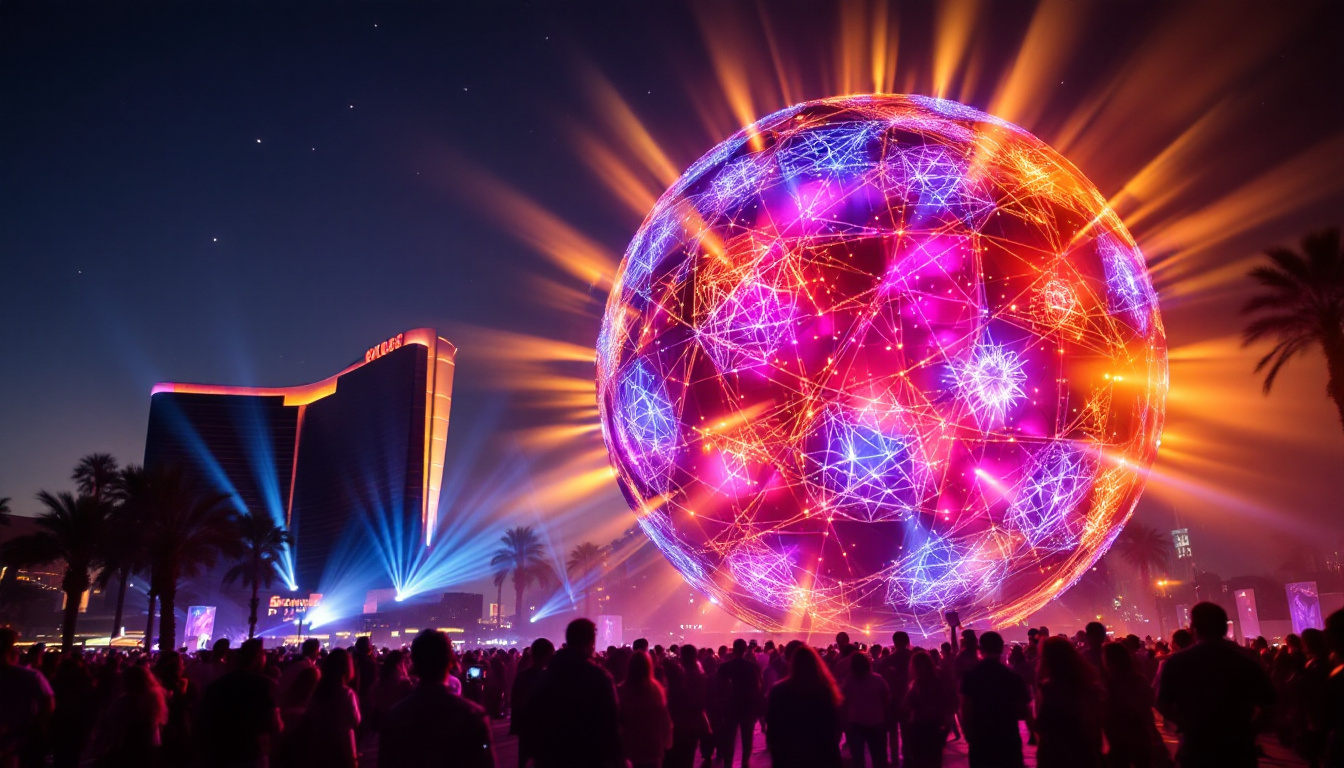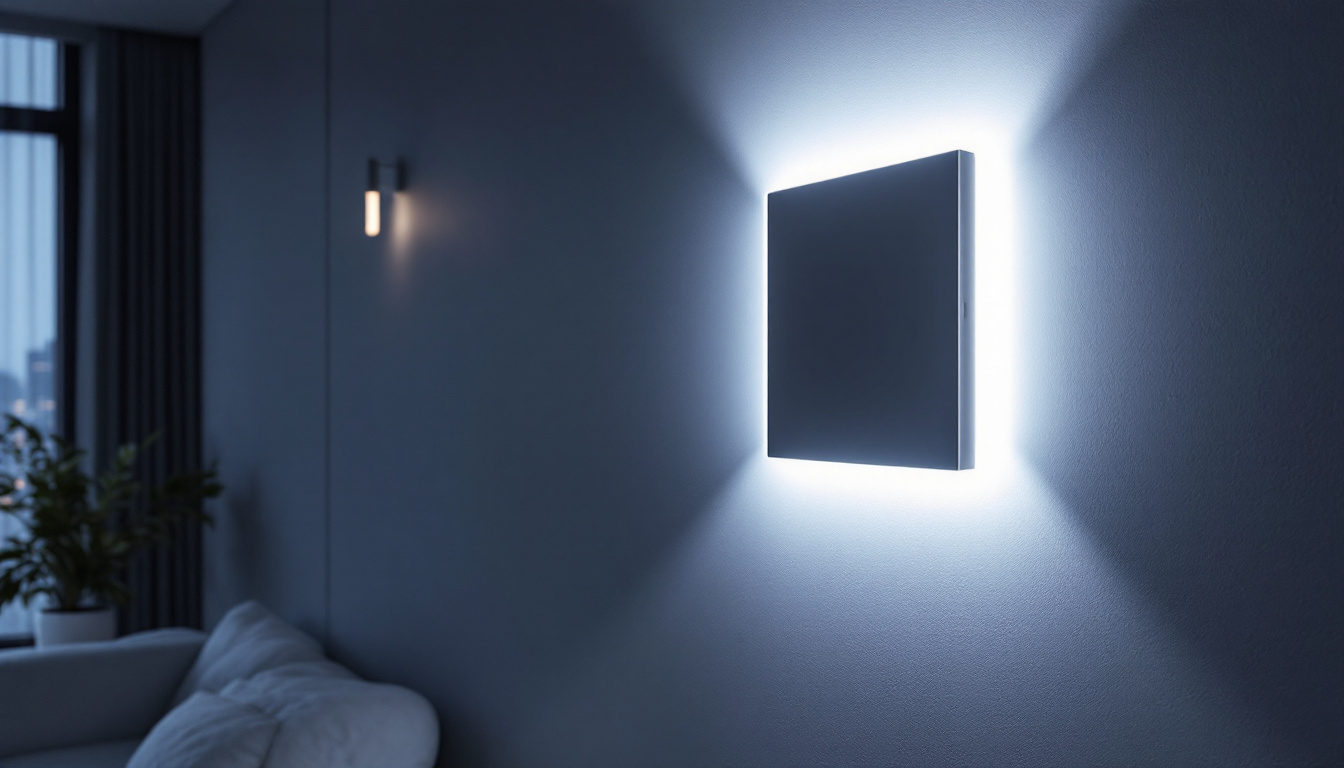Largest LED Display: LED Display Explained
In today’s digital age, LED displays have revolutionized the way information is conveyed to the public. From large-scale billboards to intricate screens in stadiums, the versatility and brilliance of LED technology have made it a popular choice for various applications. This article delves into the world of LED displays, exploring their features, applications, and the largest installations around the globe.
Understanding LED Technology
Light Emitting Diodes (LEDs) are semiconductor devices that emit light when an electric current passes through them. This technology has transformed the display industry due to its energy efficiency, longevity, and vibrant color reproduction. Unlike traditional incandescent bulbs, LEDs consume significantly less power and have a much longer lifespan, making them an environmentally friendly choice. The shift towards LED technology has not only reduced energy consumption but has also led to lower operational costs for businesses and consumers alike, as the need for frequent replacements is minimized.
Furthermore, the versatility of LED technology extends beyond mere illumination. It is now widely used in various applications, from decorative lighting to advanced medical devices. The ability to manipulate the color and intensity of light emitted by LEDs has opened up new avenues in design and functionality, allowing for creative lighting solutions that enhance both aesthetics and practicality in everyday life.
The Components of LED Displays
LED displays are composed of several key components that work together to create a stunning visual experience. These include:
- LED Modules: The basic building blocks of LED displays, these modules contain multiple LEDs arranged in a grid pattern. Each module can be individually controlled, allowing for dynamic content and intricate designs that can captivate an audience.
- Control Systems: These systems manage the input signals and ensure that the right images and videos are displayed at the right time. Advanced control systems can even incorporate real-time data feeds, enabling displays to show live updates, such as news headlines or social media posts.
- Power Supply: A reliable power source is crucial for maintaining the brightness and functionality of the display. Modern power supplies are designed to be energy-efficient and can adapt to varying power conditions, ensuring consistent performance.
Types of LED Displays
There are several types of LED displays, each designed for specific applications:
- Indoor LED Displays: These are typically used in venues such as theaters, shopping malls, and conference rooms. They offer high resolution and vibrant colors, making them ideal for close viewing. The pixel pitch in indoor displays is often finer, allowing for detailed images that engage viewers effectively.
- Outdoor LED Displays: Built to withstand harsh weather conditions, outdoor displays are commonly seen on billboards, sports arenas, and public transportation stations. They are designed for visibility from a distance, utilizing high brightness levels to combat sunlight and ensure clarity in various environments.
- Transparent LED Displays: A newer innovation, these displays allow light to pass through, making them suitable for storefronts and exhibitions without obstructing the view. Their unique design enables businesses to showcase products while still maintaining an open and inviting atmosphere.
In addition to these types, there are also specialized LED displays, such as flexible LED screens that can be curved or shaped to fit unique spaces, and interactive LED displays that respond to touch or motion, enhancing user engagement. The continuous evolution of LED technology promises even more innovative solutions, paving the way for immersive experiences in advertising, entertainment, and beyond.
The Advantages of LED Displays
LED displays offer numerous advantages over traditional display technologies. Their benefits include:
Energy Efficiency
One of the most significant advantages of LED displays is their energy efficiency. They consume less electricity compared to other display types, which not only reduces operational costs but also minimizes environmental impact. This efficiency is particularly beneficial for large installations that operate continuously. Furthermore, many LED displays come equipped with adaptive brightness technology, which automatically adjusts the display’s brightness based on ambient light conditions. This feature not only enhances visibility but also contributes to further energy savings, making LED displays an eco-friendly choice for businesses looking to reduce their carbon footprint.
Longevity and Durability
LED displays are known for their longevity. With a lifespan that can exceed 100,000 hours, they require less frequent replacements, leading to lower maintenance costs. Additionally, they are more resistant to shocks and vibrations, making them suitable for various environments. This durability extends to extreme weather conditions as well, with many LED displays designed to withstand rain, snow, and intense sunlight. As a result, they are increasingly being used in outdoor settings, such as stadiums and public squares, where traditional displays might fail or require constant upkeep.
High Brightness and Color Accuracy
LED technology provides exceptional brightness levels, ensuring visibility even in direct sunlight. Coupled with high color accuracy, LED displays can produce vivid images and videos that captivate audiences. This makes them an ideal choice for advertising and entertainment purposes. Moreover, the ability to display a wide color gamut allows for more dynamic and engaging content, which is especially important in competitive advertising spaces. The sharp contrast ratios of LED displays also enhance the viewing experience, making graphics pop and ensuring that messages are communicated effectively, whether in a bustling city or a quiet indoor setting.
Applications of LED Displays
The versatility of LED displays allows them to be used in a wide range of applications. Some of the most common uses include:
Advertising and Marketing
LED displays have become a staple in advertising due to their ability to attract attention. From digital billboards to storefront displays, businesses utilize these screens to showcase promotions and products dynamically. The ability to change content quickly makes them a powerful tool for marketers.
Sports and Entertainment
In the realm of sports, LED displays enhance the spectator experience. Stadiums use large screens to display live game footage, replays, and advertisements, keeping fans engaged throughout the event. Similarly, concerts and festivals leverage LED technology to create immersive visual experiences.
Transportation Hubs
Airports, train stations, and bus terminals utilize LED displays for real-time information dissemination. These screens provide travelers with updates on schedules, delays, and other essential information, ensuring smooth operations within transportation systems.
The Largest LED Displays in the World
As LED technology continues to advance, some installations have reached monumental proportions. Here are a few of the largest LED displays around the globe:
1. Times Square, New York City
Times Square is home to some of the most iconic LED displays in the world. The area features multiple massive screens that collectively create a vibrant digital canvas. The largest single display, located at 1 Times Square, measures an astounding 24,000 square feet, making it a central hub for advertising and entertainment.
2. The LED Screen at the Burj Khalifa, Dubai
The Burj Khalifa, the tallest building in the world, boasts an impressive LED display that wraps around its façade. This screen is used for various purposes, including special events and holiday celebrations. Its total area is approximately 1,000 square meters, showcasing stunning visuals that light up the Dubai skyline.
3. The LED Display at the Tokyo Skytree, Japan
The Tokyo Skytree features one of the largest LED displays in Japan. This display is used to broadcast information and entertainment to visitors, enhancing their experience at the iconic tower. The combination of height and technology makes it a remarkable sight in the Tokyo skyline.
Future Trends in LED Display Technology
The future of LED display technology looks promising, with several trends emerging that are set to shape the industry:
Flexible and Curved Displays
Flexible LED displays are gaining traction, allowing for innovative designs that can adapt to various surfaces. These displays can be curved or bent, enabling unique installations that were previously impossible. This flexibility opens up new possibilities for advertising and artistic expression.
Higher Resolution Displays
As technology advances, higher resolution displays are becoming more common. 4K and even 8K LED displays are now available, providing unparalleled image quality. This trend is particularly significant for applications requiring detailed visuals, such as medical imaging and high-end entertainment.
Integration with Smart Technology
The integration of LED displays with smart technology is on the rise. Features such as real-time data integration, interactivity, and connectivity with mobile devices are becoming standard. This evolution enhances user engagement and allows for more dynamic content delivery.
Challenges Facing the LED Display Industry
Despite the numerous advantages of LED displays, the industry faces several challenges that need to be addressed:
Cost of Installation
The initial cost of installing large LED displays can be significant. While the long-term savings on energy and maintenance can offset this expense, the upfront investment can be a barrier for some businesses, particularly small and medium enterprises.
Environmental Concerns
While LED technology is more energy-efficient than traditional displays, the production and disposal of LED screens raise environmental concerns. The industry is working towards more sustainable practices, including recycling programs and the use of eco-friendly materials.
Technological Obsolescence
As technology evolves rapidly, there is a risk of LED displays becoming obsolete. Manufacturers must continuously innovate to keep pace with advancements in resolution, brightness, and interactivity. This constant evolution can lead to challenges in maintaining existing installations.
Conclusion
The world of LED displays is vast and continually evolving. From their energy efficiency and longevity to their applications in advertising, sports, and transportation, LED displays have become an integral part of modern life. As technology advances, the future holds exciting possibilities, including flexible designs, higher resolutions, and smarter integrations.
Understanding the intricacies of LED displays not only highlights their significance in the digital landscape but also emphasizes the importance of innovation in shaping our visual experiences. As the largest LED displays continue to captivate audiences worldwide, they serve as a testament to the power of technology in transforming the way we communicate and engage with our environment.
Discover the Future of Visual Engagement with LumenMatrix
As you’ve seen, LED displays are reshaping our visual world with their dynamic capabilities and innovative applications. If you’re inspired to elevate your brand’s presence or create immersive experiences that captivate and engage, look no further than LumenMatrix. Our extensive range of cutting-edge LED display solutions, from Indoor and Outdoor LED Walls to Custom and Transparent Displays, are designed to revolutionize visual communication. Embrace the future of digital signage with LumenMatrix and let your message shine with unparalleled clarity and impact. Check out LumenMatrix LED Display Solutions today and transform your space into a beacon of innovation.

